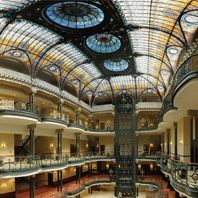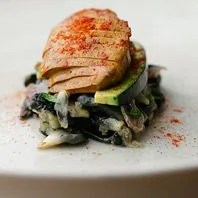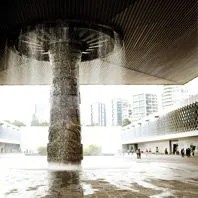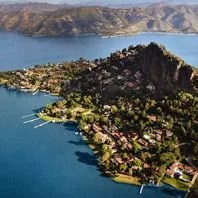Though it has received worldwide hype for its food scene, Mexico City still might be one of the best-kept secrets in the Western Hemisphere. Despite over 20 million trips to Mexico in 2014, Cancun, Cabo and other coastal destinations remained the largest draw. That’s good news for any American looking for a dose of modern Mexican culture; Mexico City is one of the largest cities in the world with more than 20 million people in its greater metropolitan area, rivaling any other capital with its cultural and historical significance, which dates back to Mesoamerica. The distinct, developing neighborhoods and blossoming food scene serve as the backdrop for a look inside Metropolitan Mexico, a stark contrast to the beach lifestyles experienced by most travelers along the coast.
It’s also unexpectedly accessible via direct flights from most major US hubs, with a shorter or equal flight time than going between major cities across our own country. From New York City, for example, you can be there in less than five hours. From al pastor tacos to romantic castle vistas, here’s what to experience once you’re there.

Where to Stay
A city the size of Mexico City has something for everyone. You can expect all the regulars when it comes to large, luxurious hotels, including the St. Regis, Four Seasons, JW Marriott and the Intercontinental. The most famous and historic of the luxury options is the Gran Hotel Ciudad de México, located on the Zócalo Square adjacent to the government buildings. The building, originally constructed in 1899, was designed in the Parisian Art Nouveau style, and the interior is reminiscent of the golden age of travel with its caged elevators, stained-glass ceiling, and grand staircase. Request a room overlooking the Square. Mid-range modern boutiques are all over the city, such as Hotel Carlota adjacent to the Paseo de la Reform Avenue, La Valise in Roma, Chaya B&B in Al Centro, the Hotel Geneve in Zona Rosa, and the Hotel Catedral overlooking the city’s most prominent church. To save money and feel good about it, consider the Casa de Los Amigos, a nonprofit guest house that funnels its money back into justice- and peace-related projects, like housing refugees and migrants. The budget-friendly Hotel Isabel has a beautiful interior Colonial courtyard, affordable rates ($20/night), and a great location in the Historic Center. AirBnBs are a great option in a city of this size, not only in terms of options and affordability but in the ability to fully integrate into a neighborhood.

Where to Eat
Mexico City is consistently amongst the conversation of best food cities in the world. Much of that regard comes from its reputation for high-end restaurants from high-profile chefs, such as Enrique Olvera’s Pujol, a regular on lists of the world’s best restaurants for its upscale Mexican. Everywhere you turn, there’s a new restaurant generating a lot of hype, so be sure to seek local advice about what’s happening in your favorite neighborhoods (see a list of those below). Check out the Mercado Roma for its upscale take on the everyday market; Felina in Hipódromo/Condesa for its cocktails and gourmet sandwiches; If you’re keen on exploring Mexico City’s culinary bug scene, order the ant larva with eggs at Eduardo García’s Lalo!; stop in to the local-favorite chain, La Casa de Toño, any time of day for quick and delicious pazole, sope, tostada, or arroz con leche; grab a beer at Catina Tio Pepe and take in its traditional, historic feel; try Mama Rumba for beer and salsa dancing; and Jetson’s for papas rellenas; and El Palenquito in Roma Norte for a typical neighborhood mezcal bar. In fact, mezcal is worth pursuing further: Besides trying it at mezcal bars and in cocktails, we recommend doing a tasting to learn about its production, how it differs from tequila, and how the different agave plants and aging process affect its taste. While much of Mexico’s regarded mezcal comes from Oaxaca, La Fiera Mezcal offers a special tasting of mezcals from the lesser-known state of Guerrero, all sourced from small-batch producers.
And now… tacos. They can be found on every corner, from family-run carts to cafeteria-style cafes, like El Tizoncito. Like cheesesteaks in Philly or pizza in New York City, everyone will have a different favorite, especially when it comes to the popular “al pastor” style, the spindle-cut marinated pork tacos originally developed in Central Mexico. For what it’s worth, our personal favorite for al pastor was El Huequito. Have fun window-shopping food carts, but if you only have a few days, there is a shortcut for those with limited time. Club Tengo Hambre leads a great walking taco tour, called Street Food Essentials, that allows you to try a range of taco styles from Al Centro’s “best” establishments. The tour proves that a taco isn’t just a taco, giving you the chance to try and learn the history of different variations, including soggy “basket tacos,” stewed guisado style, Lebanese pastor, Tolucan chorizo, and vegetarian-friendly fava-bean and white-cheese quesadillas.


